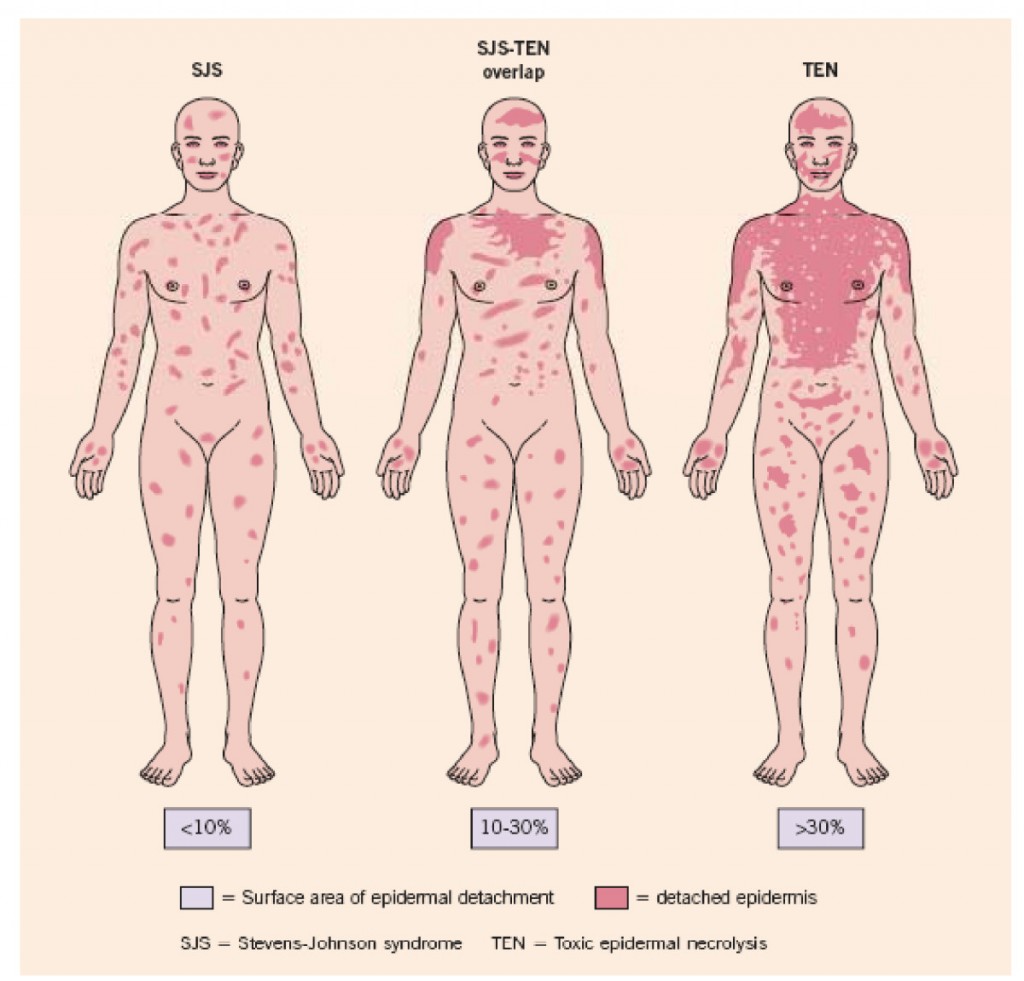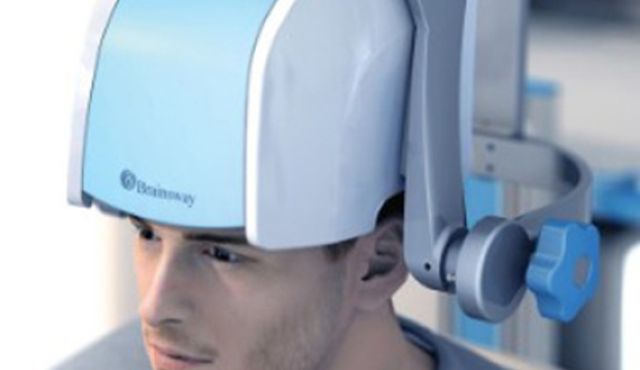Combination of N-acetylcysteine and Risperidone Improves Irritability in Autistic Disorders More Than Placebo and Risperidone
In a 2013 study of 40 children and adolescents with autism spectrum disorders published by Ahmad Ghanizadeh and Ebrahim Moghimi-Sarani in the journal BMC Psychiatry, the combination of the over-the-counter nutritional supplement n-acetylcysteine (NAC) and the atypical antipsychotic risperidone alleviated irritability more than the combination of placebo and risperidone. Side effects were mild. The data extend 2012 observations by A.Y. Hardan et al. in which NAC improved irritability and stereotypy (repeated behavior) in autism more than placebo did.
The two studies taken together support the effectiveness of NAC prescribed either alone or in conjunction with an atypical antipsychotic for the treatment of autism.
Possible Heart Failure Risk with Pramipexole
We’ve written before about the drug pramipexole, which is typically used to treat Parkinson’s disease and restless legs, but can also improve depressed mood and cognition in those with bipolar disorder. The Federal Drug Administration (FDA) published a warning in 2012 that the drug may increase risk of heart failure, though more research is needed to confirm this link. In a review of existing studies, the FDA found that heart failure occurred more often in participants taking pramipexole than those taking placebo, but the finding did not reach statistical significance.
Acupuncture with Paroxetine Better Than Paroxetine Alone
In a six-week study published by S.S. Qu et al. in the Journal of Psychiatric Research in 2013, participants with depression who received manual or electrical acupuncture along with the selective serotonin reuptake inhibitor (SSRI) antidepressant paroxetine (Paxil) improved more than those participants taking paroxetine alone.
More patients taking paroxetine alone needed increased doses to deal with symptom aggravation.
Patients who had received electrical acupuncture continued to show improvement four weeks after the treatment ended.
Genetic Test Predicts Risk of Severe Rash While Taking Carbamazepine
Carbamazepine (also known by its trade name Tegretol or, for extended release, Equetro) is one of the most widely used drugs for the treatment of epilepsy, and is relatively underutilized in the treatment of bipolar disorder. One of the reasons is fear of a rare serious rash or other side effects.
The risk of the serious rash ranges from about one in 5,000 to one in 10,000. Loss of white blood cells that fight infection (a condition called agranulocytosis) occurs in about one in 20,000 people taking carbamazepine, while a decrease in white blood cells, red blood cells, and platelets (aplastic anemia) occurs in about one in 100,000 patients.
There is no way of predicting who will develop the blood disorders in reaction to carbamazepine use. A patient should contact their doctor and get a white blood cell count if they develop some warning signs of these conditions, such as a fever or sore throat without other explanation or signs of bleeding or red spots under the skin (called petechiae) that could indicate low platelets.
Genetic Test for Risk of Rash
A genetic test is available that can help estimate the likelihood of the serious rash among certain populations. In those of Asian descent, particularly Han Chinese, Thai, Malaysian, and Indian populations, having a version of the gene HLA-B known as HLA-B*1502 is highly associated with developing the rash. (The odds ratio was 79.84 in a 2013 meta-analysis by Tangamornsuksan et al. in the journal JAMA Dermatology).
In those of northern European or Japanese descent, having a version of the gene HLA-A known as HLA-A*3101 is associated with the severe rash. (Odds ratio for developing the most severe rash was 25.93 in a study of Europeans published by McCormack et al. in the New England Journal of Medicine in 2011 and 10.8 in a study of Japanese published by Ozeki et al. in the journal Human Molecular Genetics in 2011). This HLA-A*3101 gene is present in about 2 to 5% of Europeans and 9% of Japanese.
A mild, non-serious rash with redness and itchiness occurs in about 5 to 10% of patients taking carbamazepine, and almost always goes away quickly upon stopping the drug. For patients taking carbamazepine who develop any rash, stopping the drug is the safest and most conservative thing to do. However, those who have taken the HLA test who know they do not have the risk genes and have only the benign rash might want to consider continuing to take the drug.
Benefits of Carbamazepine
There are a number of reasons why carbamazepine may be worthy of a treatment trial in patients with bipolar disorder who are not doing well on other agents. Carbamazepine works well in many patients with bipolar illness who have some of the common clinical predictors of a poor response to lithium. These include: having dysphoric (anxious, irritable) rather than euphoric mania, having an anxiety or substance disorder comorbidity, having had many prior episodes or rapid cycling (four or more episodes/year), not having distinct episodes with a period of wellness in between, having a sequential pattern of depression followed by mania followed by a well interval (D-M-I rather than M-D-I), having a schizoaffective disorder with delusions or hallucinations that persist after a manic or depressive episode has ended, and having no family history of mood disorders (especially bipolar disorder).
Some patients who do not respond to another anticonvulsant such as valproate do respond to carbamazepine. Patients with bipolar depression who have had a prior history of alcoholism may also do particularly well on carbamazepine. A benefit of the long-acting version of carbamazepine called Equetro is that it can be taken at bedtime and thus help with sleep and minimize daytime side effects.
Editor’s Note: Carbamazepine induces liver enzymes called CYP3A4 that increase the metabolism (breakdown) of carbamazepine and other drugs. Several drugs that inhibit 3A4 (such verapamil and erythromycin) prevent the breakdown of carbamazepine, causing blood levels of the drug to increase and produce side effects. If you are taking carbamazepine, tell your pharmacist so he or she can monitor any other drugs you are taking for potential interactions with carbamazepine.
Knowing about the rare skin and blood side effects of carbamazepine and some of the clinical predictors of a good response to the drug may be helpful in determining whether the potential benefits of carbamazepine outweigh the risks.
Biomarker Suggests Which Patients With Depression Respond to Cognitive Behavior Therapy Versus SSRI
Not every treatment for mood disorders works for every patient, and for the 60% of depressed patients whose first treatment is ineffective, this wrong guess can translate into months of suffering, wasted money, lost productivity, and risk of suicide. An important trend in treatment research is the search for biomarkers, that is, biological indicators that can predict which patients might be likely (or unlikely) to respond to a particular treatment. A 2013 study by McGrath et al. in the journal JAMA Psychiatry suggests that brain glucose metabolism is one such biomarker.
Patients with untreated major depressive disorder had their brain glucose metabolism measured and then were randomized to receive 12 weeks of treatment either with the SSRI antidepressant escitalopram oxalate (trade name Lexapro) or with cognitive behavior therapy. Low glucose metabolism in a part of the brain called the anterior insula (compared to the rest of the brain) predicted that patients would reach remission on cognitive behavior therapy and respond poorly to escitalopram, while high metabolism in the same area predicted the opposite, that patients would reach remission while taking escitalopram and respond poorly to cognitive behavior therapy.
Researchers will want to test this finding with patients over the long term, but the data from this study suggest that anterior insula glucose metabolism may be a successful biomarker that can guide initial treatment selection for patients with depression.
Diabetes Drug Metformin May Impair Cognition, But Vitamin B12 May Help
Metformin, one of the most popular drugs to treat type 2 diabetes, interferes with uptake of vitamin B12, which can in turn lead to some neuronal dysfunction resulting in cognitive dysfunction. Several studies have sought to clarify this link, which may affect up to 30% of patients taking the drug.
Most recently, an Australian analysis of 1354 aging patients found that those with type 2 diabetes performed less well on tests of cognitive abilities, and those diabetic patients with low vitamin B12 levels (below 250 pmol/L) scored lower than those diabetic patients with adequate levels.
Because of the malabsorption problem caused by metformin, patients taking the drug may not be able to get enough B12 from a balanced diet alone and may need supplemental B12. Those who follow a vegetarian diet, have had bowel surgery, have certain complications with the stomach, or who take other medications that depress stomach acid may be at special risk.
Physicians should carefully monitor B12 levels in patients taking metformin, particularly those who have been taking the drug for more than 3 years or those who already suffer from some sort of cognitive impairment.
Resistance Training Is Good For Fibromyalgia
 About a year ago we reported that exercise was recommended for patients with fibromyalgia and chronic fatigue syndrome. The case for exercise has been bolstered by a 2013 analysis published by the Cochrane Collaboration, a nonprofit research network. The authors reviewed five randomized clinical trials that compared resistance training with a control or another type of physical activity in a total of 219 women. Resistance training is exercise that is performed against resistance with the intention of improving muscle strength, and can include weights, resistance machines, or elastic resistance bands. The authors found that in the studies they analyzed, resistance training was both beneficial and safe for women with fibromyalgia, and that aerobic exercise helped reduce pain.
About a year ago we reported that exercise was recommended for patients with fibromyalgia and chronic fatigue syndrome. The case for exercise has been bolstered by a 2013 analysis published by the Cochrane Collaboration, a nonprofit research network. The authors reviewed five randomized clinical trials that compared resistance training with a control or another type of physical activity in a total of 219 women. Resistance training is exercise that is performed against resistance with the intention of improving muscle strength, and can include weights, resistance machines, or elastic resistance bands. The authors found that in the studies they analyzed, resistance training was both beneficial and safe for women with fibromyalgia, and that aerobic exercise helped reduce pain.
As reported in Medscape Medical News, lead author Angela Busch said, “It appears that people with fibromyalgia can benefit from this form of exercise, but we noted that the programs we examined involved supervised exercise and started low and gradually increased the resistance. There are particular health benefits associated with resistance exercise (e.g. increasing bone strength, which is important for preventing osteoporosis), so it is good to know that clinicians can safely [recommend] this form of exercise.”
Whether patients will widely accept this recommendation remains to be seen since some doctors have advised only rest. The key to avoiding pain exacerbation while adding an exercise regimen may be, like in much of medicine, to start slow.
Editor’s Note: The antidepressant milnacipran (Savella) is the most recent drug to receive Federal Drug Administration approval for the treatment of fibromyalgia. Pregabalin (Lyrica) and duloxetine (Cymbalta) were approved for fibromyalgia in 2007 and 2008, respectively.
Exercise Helps Mice with Spacial Learning
Exercise increases brain-derived neurotrophic factor (BDNF), a protein that protects neurons and is important for learning and memory. In a study of mice who were trained to find objects, sedentary mice could not discriminate between familiar object locations and novel ones 24 hours after receiving weak training, while mice who had voluntarily taken part in exercise over a 3-week period could easily distinguish between these locations after the weak training.
Mice who received sodium butyrate (NaB) after training behaved similarly well to those who had exercised. Sodium butyrate is a histone deacetylase (HDAC) inhibitor, meaning it helps keep acetyl groups on histones, around which DNA is wrapped, making the DNA easier to transcribe. In this case the easy transcription of DNA enables learning under conditions in which it might not usually take place.
Both sodium butyrate and exercise promote learning through their effects on BDNF in the hippocampus. They make the DNA for BDNF easier to transcribe, suggesting that exercise can put the brain in a state of readiness to create new or more lasting memories.
IV Ketamine Produces Antidepressant Effects More Rapidly Than ECT
 More and more evidence suggests that drugs such as ketamine that work by blocking the brain’s NMDA receptors can produce rapid-acting antidepressant effects in patients with depression.
More and more evidence suggests that drugs such as ketamine that work by blocking the brain’s NMDA receptors can produce rapid-acting antidepressant effects in patients with depression.
In a recent study by Ghasemi et al. published in the journal Psychiatric Research, 18 patients with unipolar depression were divided into two groups, one that received intravenous infusions of ketamine hydrochloride (0.5 mg/kg over 45 minutes) three times (every 48 hours), and another that received electroconvulsive therapy (ECT) on the same schedule.
Ketamine produced antidepressant effects more quickly than ECT, and these effects were significantly better than baseline for the duration of the study, but not significantly different from those achieved through ECT by the end of the study.
Editors Note: These data continue to add to the already strong findings that ketamine produces rapid-onset antidepressant effects. When and where ketamine should be incorporated into routine clinical treatment of depression remains to be further clarified.
Second RTMS Device Approved for Treatment-Resistant Depression
In 2008, the Federal Drug Administration approved the Neuronetics company’s Neuro-Star system for delivering repeated transcranial magnetic stimulation to patients with treatment-resistant depression. In rTMS treatment, an electromagnetic coil is placed against the forehead and magnetic pulses that can penetrate the scalp are converted into small electrical currents that stimulate neurons in the brain. Now the FDA has approved a second device manufactured by Brainsway Ltd.
In 2012, Brainsway released data from their double-blind, multicenter controlled trials of the device. After five weeks of treatment, 30.4% of the patients who received the rTMS treatment achieved remission of their depression, twice the rate of remission among the patients who received a sham procedure instead.
Editor’s Note: These data showing slightly higher response rates than seen in two trials by Neuronetics confirm the efficacy of rTMS in patients whose depression persists after one or more trials with antidepressant medications. The efficacy of rTMS in those patients who have failed to respond to multiple antidepressant medications remains to be further defined, as do the optimal stimulation parameters to achieve the best results in this difficult-to-treat sub-group of patients.









